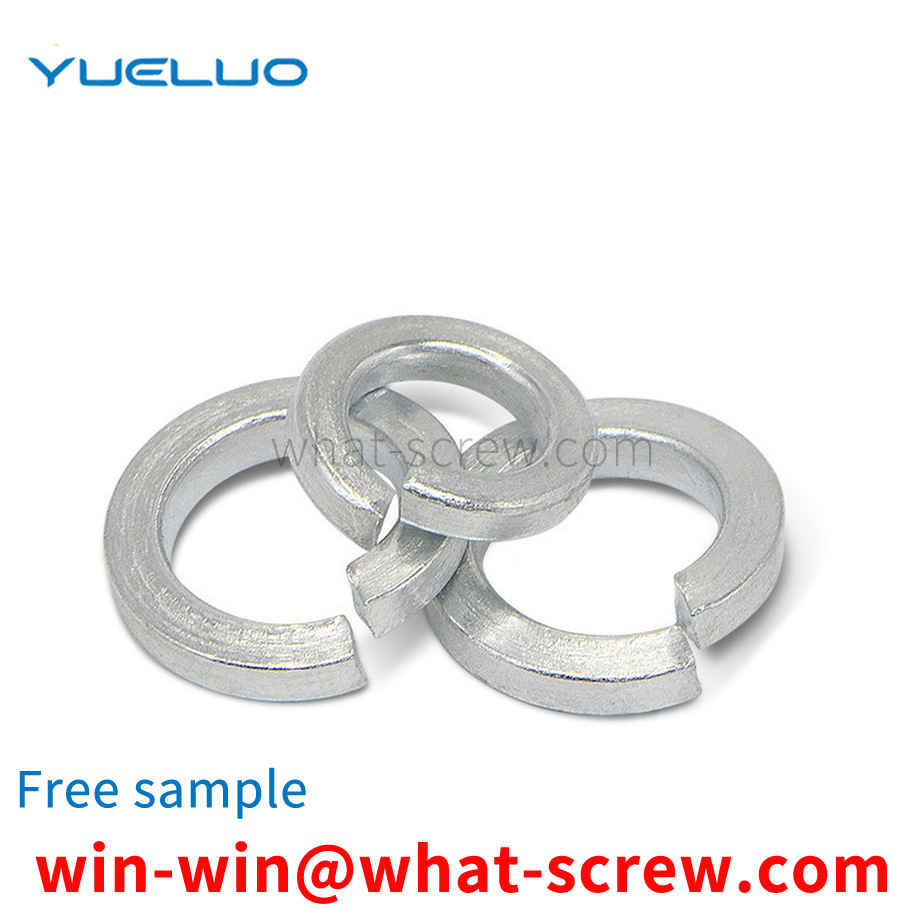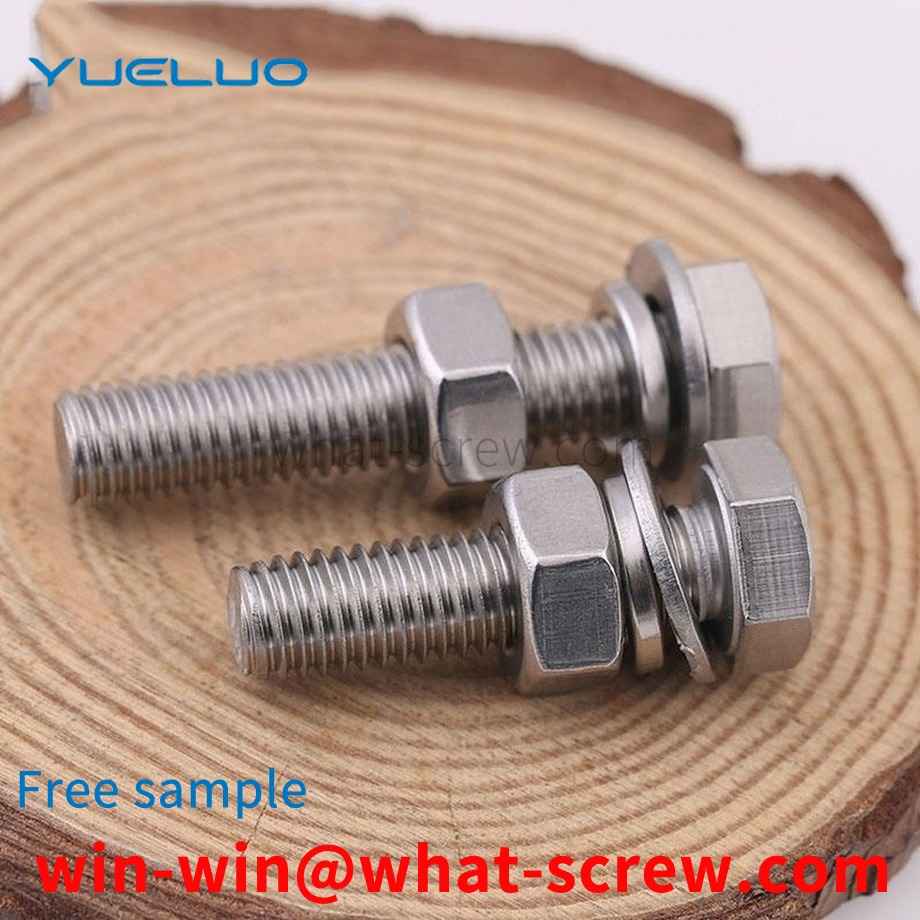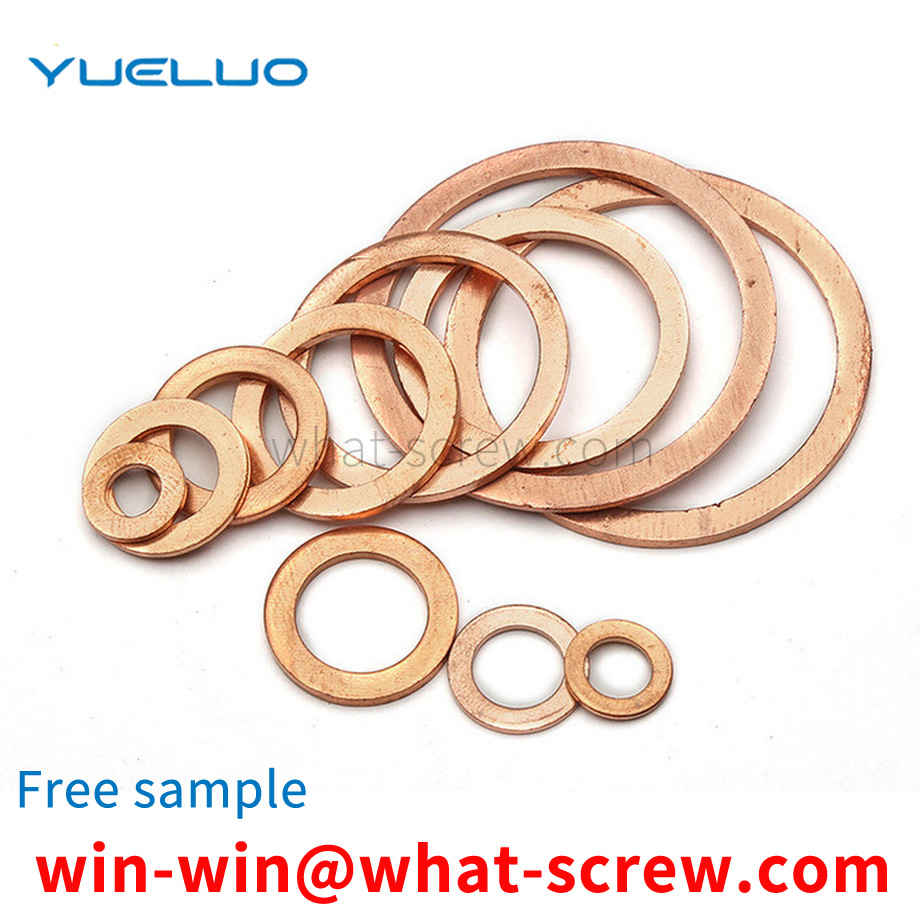What is the tolerance range of precision screws?
What is the tolerance range of precision screws?
Service Hotline
+86760-8787 8587We have more than ten years of production experience in the screw industry, the main products are: racket screws, block nut, spring washer standard GB93-89, two-wave wave spring washer, hexagonal internal expansion bolts, GB848 washers, nylon lock nuts, Recessed machine screws and bolts, serrated washers, flat knurled screws, pressure flanges, thin hexagonal fine pitch nuts, grade 14.9 screws, standard spring washers, square welded nuts and other fasteners, due to the different materials and specifications of the products, Prices also vary, please contact us if necessary.


There are many types of T-bolts used with pre-embedded chutes, which are used for the connection of external components of pre-embedded chutes embedded in segments, U-beams, building concrete, etc. The fixing of the chute on the forming die. When producing segments and U-shaped beams, the embedded chute is fixed on the forming mold by T-bolts. During the concrete pouring process, the tightening nut is easily covered by concrete. In this way, the concrete on the fastening nut should be removed, but it is difficult to remove the concrete, which will cause inconvenience to the disassembly of the forming mold after the production of the segment and the U-shaped beam.

The difference between high-strength bolt friction type and pressure-bearing type connection: High-strength bolt high-strength bolt connection is to clamp the plate of the connecting plate through a large tightening pre-pressure in the bolt rod, which is enough to generate a large friction force, thereby improving the connection. The integrity and stiffness of the bolt can be divided into two types: high-strength bolt friction type connection and high-strength bolt pressure type connection according to different design and force requirements when subjected to shear force. The essential difference between the two is that the limit state is different, although It is the same kind of bolt, but it is very different in terms of calculation method, requirements, and scope of application. In the shear design, the friction type connection of high-strength bolts is the limit state when the external shear force reaches the possible maximum friction force provided by the bolt tightening force between the contact surfaces of the plates, that is, the internal and external shear force of the connection is guaranteed not to exceed maximum friction. The plate will not undergo relative slip deformation (the original gap between the screw and the hole wall is always maintained), and the connected plate will be elastically stressed as a whole. In the design of shear resistance, the external shear force is allowed to exceed the maximum friction force in the high-strength bolt-bearing connection. At this time, relative slip deformation occurs between the connected plates until the bolt rod contacts the hole wall, and then the connection depends on the bolt rod. The shearing of the body and the bearing of the hole wall and the friction between the contact surfaces of the plates jointly transmit the force, and finally the shearing of the shaft or the bearing of the hole wall is regarded as the limit state of the connection shearing. In a word, friction type high-strength bolts and pressure-bearing high-strength bolts are actually the same type of bolts, but whether the design considers slippage. Friction type high-strength bolts can never slide, and the bolts do not bear shear force. Once slipped, the design is considered to reach a state of failure, which is technically mature; pressure-bearing high-strength bolts can slide, and the bolts also bear shear force, and the final damage is equivalent to ordinary Bolt failure (bolt shearing or steel plate crushing).


In another embodiment of Guangdong Yueluo Hardware Industrial Co., Ltd., the conveying device 3 includes a motor 31 and a circular rotating disk 34, the motor 31 drives the circular rotating disk 34 to rotate, and the circular rotating disk 34 is evenly provided with screws in the circumferential direction. The matching screw accommodating hole 35, the screw enters the screw accommodating hole 35, the motor 31 drives the circular rotating plate 34 to rotate, so that the screw is first slotted by the cutting wheel 42, and then polished by the fixing wheel 48, and the screw is in the screw accommodating hole 35. It is fixed, which is more secure and reliable during the slotting process. Preferably, the circular rotating disk 34 includes a circular rotating disk 32 and a sector-shaped fixed disk 33. The circular rotating disk 32 is evenly provided with screw receiving recesses matching the screws in the circumferential direction, and the recesses and the sector-shaped fixed disk 33 are formed with the screws The matching screw receiving holes face the cutting wheel 42 and the fixing wheel 51 .

The types of rivets can be roughly divided into open type, closed type, double drum type and single drum type series. The following is a brief description of their respective models. Countersunk head blind rivets: For the riveting of riveting parts that require smooth and beautiful surfaces after riveting. Double-drum blind rivet: During riveting, the mandrel pulls the end of the rivet body into a double-drum shape, clamps the two structural parts to be riveted, and can reduce the pressure acting on the surface of the structural parts. Uses: Mainly used for riveting various thin structural parts in various vehicles, ships, construction, machinery, electronics and other industries. Blind rivet with large brim: Compared with ordinary blind rivets, the diameter of the aluminum cap of this rivet is significantly larger. When the rivet is riveted with the connector, it has a larger contact area and a stronger supporting surface, which can enhance the torque Strength, can withstand higher radial tension. Applicable industry: It is suitable for fastening soft and fragile surface materials and extra-large holes. The increased diameter of the brim has special protection applications for soft materials. Closed Blind Rivet: Designed to wrap around the mandrel head after riveting, ideal for many applications where waterproofing is required. With high shear force, anti-vibration, anti-high pressure.

The above content is uploaded by Yueluo or the Internet. If there is any copyright issue, please contact [email protected].

What is the tolerance range of precision screws?

How to choose the right stainless steel screw manufacturer?

Why is there an R angle under the head of the hexagon head s...

We have more than ten years of experience in the production ...

We have more than ten years of production experience in the ...

We have more than ten years of experience in screw industry ...

We have more than ten years of experience in screw industry ...